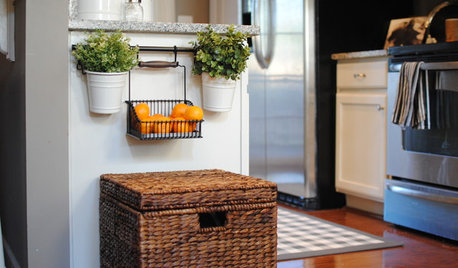What will the veggies do with all this cloud cover?
wulfletons
10 years ago
Related Stories

HOME TECHHarness the Cloud: 8 Ways to Automate Your Housekeeping
Make life easier by scheduling regular deliveries, managing appliances, simplifying meal planning and more via the web
Full Story
PRODUCT PICKSGuest Picks: Get Your Head in the Clouds
Who needs a silver lining with cloud-inspired accessories as lighthearted as these?
Full Story
FARM YOUR YARDHow to Build a Raised Bed for Your Veggies and Plants
Whether you’re farming your parking strip or beautifying your backyard, a planting box you make yourself can come in mighty handy
Full Story
HOUZZ TVHouzz TV: How to Make and Plant a Veggie Box
See how to start edibles from seed, then transfer the seedlings to a box on stilts to make harvesting more fun
Full Story
BEDROOMS10 Ways With (Almost) All-White Bedrooms
White rooms need a thoughtful tweak or two to bring on the sweet dreams
Full Story
NATIVE PLANTS5 Ways to Keep Your Native Plant Garden Looking Good All Year
It’s all about planning ahead, using sustainable practices and accepting plants as living organisms
Full Story
KITCHEN DESIGNNew This Week: Moody Kitchens to Make You Rethink All-White
Not into the all-white fascination? Look to these kitchens for a glimpse of the dark side
Full Story
ATTICS14 Tips for Decorating an Attic — Awkward Spots and All
Turn design challenges into opportunities with our decorating ideas for attics with steep slopes, dim light and more
Full Story
KITCHEN STORAGESmart Storage for Fresh, Tempting Produce
Keep fruits and veggies in easy reach with baskets, refrigerated drawers and cabinet pullouts, to stay healthy all winter long
Full Story
CONTEMPORARY HOMESHouzz Tour: A Bark-Covered Floating Getaway on Lake Union
If the unusual siding doesn’t clue you in to the fine craftsmanship in this floating home, the handmade handrails, lights and furniture will
Full StorySponsored
More Discussions






wbonesteel
Okiedawn OK Zone 7
Related Professionals
Rancho Palos Verdes Landscape Architects & Landscape Designers · Paradise Landscape Architects & Landscape Designers · Coeur d'Alene Landscape Contractors · Ellicott City Landscape Contractors · Mashpee Landscape Contractors · Pompano Beach Landscape Contractors · Vancouver Landscape Contractors · White Bear Lake Landscape Contractors · Bloomington Decks, Patios & Outdoor Enclosures · Fort Worth Decks, Patios & Outdoor Enclosures · Grain Valley Decks, Patios & Outdoor Enclosures · Natick Decks, Patios & Outdoor Enclosures · Palmetto Decks, Patios & Outdoor Enclosures · Richmond Decks, Patios & Outdoor Enclosures · Roseville Decks, Patios & Outdoor EnclosuresLisa_H OK
Okiedawn OK Zone 7
Lisa_H OK
chickencoupe
slowpoke_gardener
Okiedawn OK Zone 7
susanlynne48
chickencoupe
Okiedawn OK Zone 7